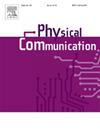Deep learning optimization positioning algorithm based on UWB/IMU fusion in complex indoor environments
IF 2.2
4区 计算机科学
Q3 ENGINEERING, ELECTRICAL & ELECTRONIC
引用次数: 0
Abstract
With the rapid development of high-precision positioning systems, the demand for accurate positioning in complex indoor environments is growing. In complex indoor environments, single indoor positioning technologies such as ultra-wideband(UWB), light detection and ranging(LiDAR), wireless network technology(Wi-Fi), and Bluetooth(BLE) are easily affected by environmental factors such as indoor multipath effects and non-line-of-sight(NLOS), resulting in reduced positioning accuracy. In order to address these limitations, the fusion of two or more ranging sensors is usually used to overcome the limitations of a single positioning method, but multi-source data often introduces nonlinear errors and dynamic drifts during the integration process, which restricts the further improvement of its positioning performance. In this study, we proposed an optimization algorithm(CNN-LSTM-DEKF) that integrates convolutional neural networks and long short-term memory networks (CNN-LSTM) and embeds a distributed extended Kalman filter(DEKF) to improve the positioning performance of UWB/IMU fusion systems in complex indoor environments. The algorithm makes full use of CNN to extract spatial features, LSTM to model time series dependencies, and combines DEKF to achieve dynamic suppression of sensor noise and state estimation optimization. Experimental results show that the root mean square error (RMSE) and mean absolute error(MAE) of the proposed algorithm in a typical office environment are reduced to 0.205 m and 0.192 m respectively, and it exhibits better stability and robustness in non-line-of-sight scenarios, verifying its feasibility and superiority in practical applications.
复杂室内环境下基于UWB/IMU融合的深度学习优化定位算法
随着高精度定位系统的快速发展,对复杂室内环境下精确定位的需求日益增长。在复杂的室内环境中,超宽带(UWB)、光探测与测距(LiDAR)、无线网络技术(Wi-Fi)、蓝牙(BLE)等单一的室内定位技术容易受到室内多径效应、非视距(NLOS)等环境因素的影响,导致定位精度降低。为了解决这些局限性,通常采用两个或多个测距传感器的融合来克服单一定位方法的局限性,但多源数据在融合过程中往往会引入非线性误差和动态漂移,制约了其定位性能的进一步提高。在这项研究中,我们提出了一种优化算法(CNN-LSTM-DEKF),该算法集成了卷积神经网络和长短期记忆网络(CNN-LSTM),并嵌入了一个分布式扩展卡尔曼滤波器(DEKF),以提高UWB/IMU融合系统在复杂室内环境下的定位性能。该算法充分利用CNN提取空间特征,LSTM建模时间序列依赖关系,结合DEKF实现传感器噪声的动态抑制和状态估计优化。实验结果表明,该算法在典型办公环境下的均方根误差(RMSE)和平均绝对误差(MAE)分别降至0.205 m和0.192 m,在非视距场景下表现出较好的稳定性和鲁棒性,验证了该算法在实际应用中的可行性和优越性。
本文章由计算机程序翻译,如有差异,请以英文原文为准。
求助全文
约1分钟内获得全文
求助全文
来源期刊

Physical Communication
ENGINEERING, ELECTRICAL & ELECTRONICTELECO-TELECOMMUNICATIONS
CiteScore
5.00
自引率
9.10%
发文量
212
审稿时长
55 days
期刊介绍:
PHYCOM: Physical Communication is an international and archival journal providing complete coverage of all topics of interest to those involved in all aspects of physical layer communications. Theoretical research contributions presenting new techniques, concepts or analyses, applied contributions reporting on experiences and experiments, and tutorials are published.
Topics of interest include but are not limited to:
Physical layer issues of Wireless Local Area Networks, WiMAX, Wireless Mesh Networks, Sensor and Ad Hoc Networks, PCS Systems; Radio access protocols and algorithms for the physical layer; Spread Spectrum Communications; Channel Modeling; Detection and Estimation; Modulation and Coding; Multiplexing and Carrier Techniques; Broadband Wireless Communications; Wireless Personal Communications; Multi-user Detection; Signal Separation and Interference rejection: Multimedia Communications over Wireless; DSP Applications to Wireless Systems; Experimental and Prototype Results; Multiple Access Techniques; Space-time Processing; Synchronization Techniques; Error Control Techniques; Cryptography; Software Radios; Tracking; Resource Allocation and Inference Management; Multi-rate and Multi-carrier Communications; Cross layer Design and Optimization; Propagation and Channel Characterization; OFDM Systems; MIMO Systems; Ultra-Wideband Communications; Cognitive Radio System Architectures; Platforms and Hardware Implementations for the Support of Cognitive, Radio Systems; Cognitive Radio Resource Management and Dynamic Spectrum Sharing.
 求助内容:
求助内容: 应助结果提醒方式:
应助结果提醒方式:


